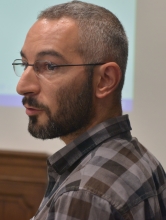Where does the surplus go? Disentangling the capital-labor distributive conflict
29 October 2015 4:00 pm CET
Dario Guarascio, Sapienza University of Rome
Venue
wiiw, Rahlgasse 3, 1060 Vienna, Library (2nd floor)
Description
The evidence on growing inequality in OECD countries has raised an important debate over its main drivers, pointing out an increasing importance of capital-labour conflict. In this contribution, we aim at disentangling the role of some of the forces shaping this process. Our identification strategy relies on the sequential nature of wage setting and profits realization, in line with theoretical insights from the range theory of wages (postulating rents sharing at the shop floor level) and the principle of effective demand. In particular we focus on the role of technology and offshoring as instruments to create surplus and to shape the bargaining power of the parties involved in wage setting, and on different sources of demand as heterogeneous determinants of profits realization. The empirical analysis is performed on a panel of 38 manufacturing and service sectors over four time periods from 1995 to 2010, covering Germany, France, Italy, Spain, and United Kingdom. The contrasting effects of R&D and offshoring emerge as determinants of wages. Investment and internal demands are key variables in the realization of profits. When we look at the heterogeneity of the effects we see three main stylized facts. First of all, distinguishing for technological domain using Pavitt classes we can see that rents are effectively related with upgraded industries. Secondly, when we distinguish for the degree of openness we can see that, again, rents are mainly shared in open industries. Finally, when we disentangle the effect on wages per skill level, it is possible to confirm the intuition that offshoring hits the medium-low skill categories.
Keywords: rent, surplus, distribution, inequality, offshoring, R&D
JEL classification: O33, F15, J31


